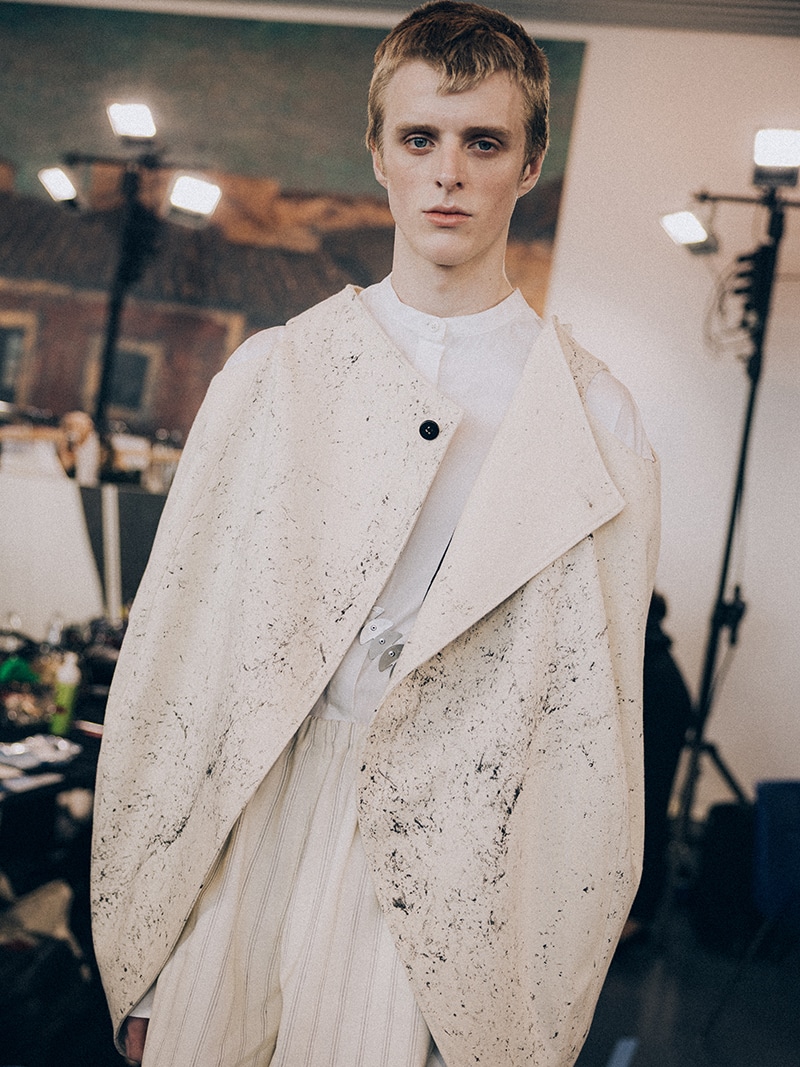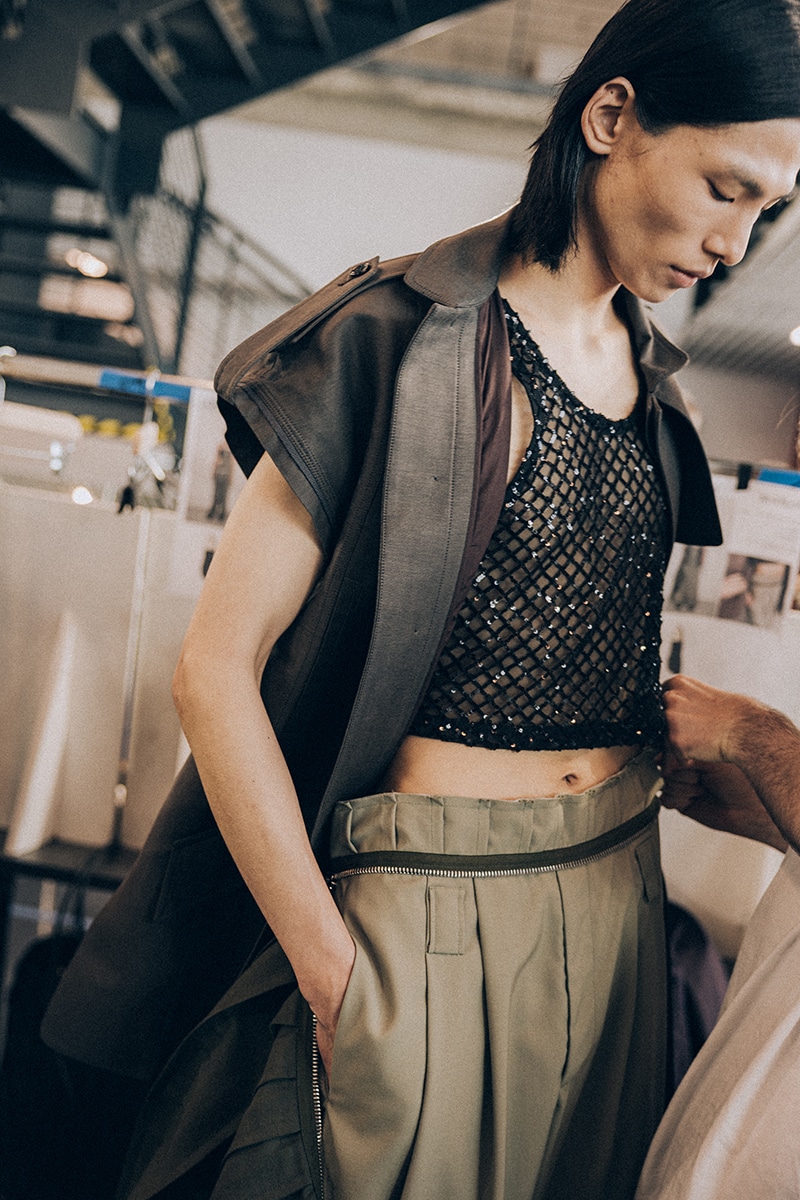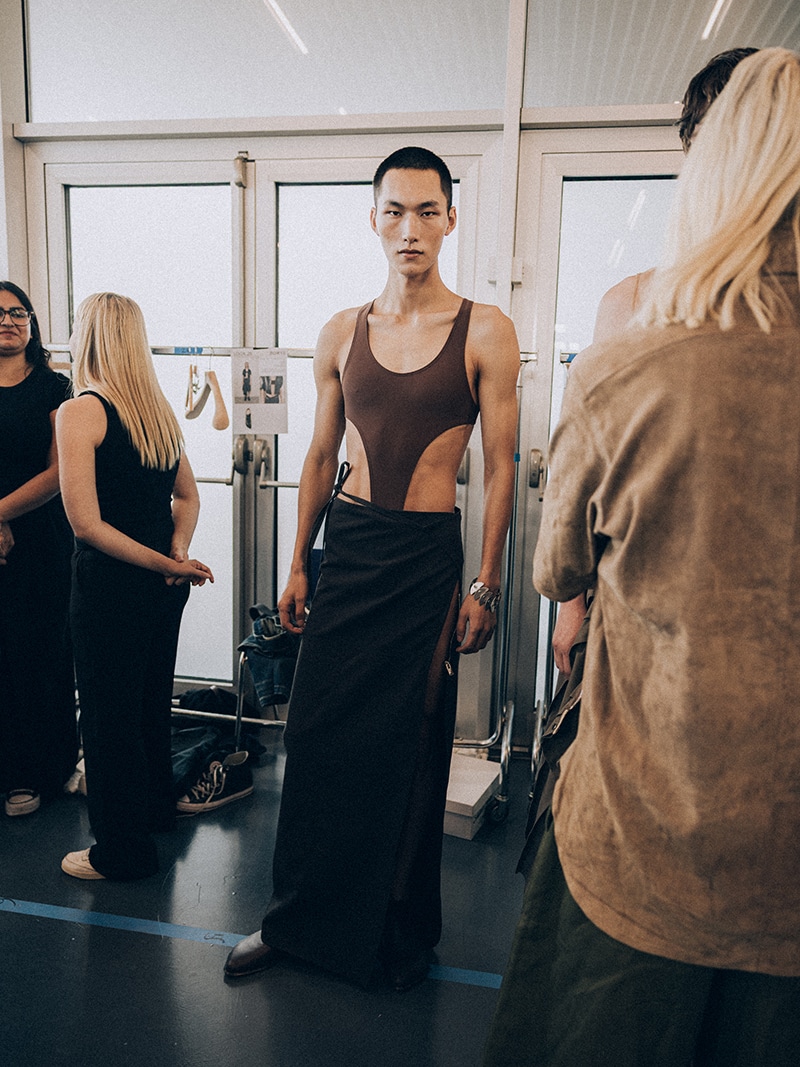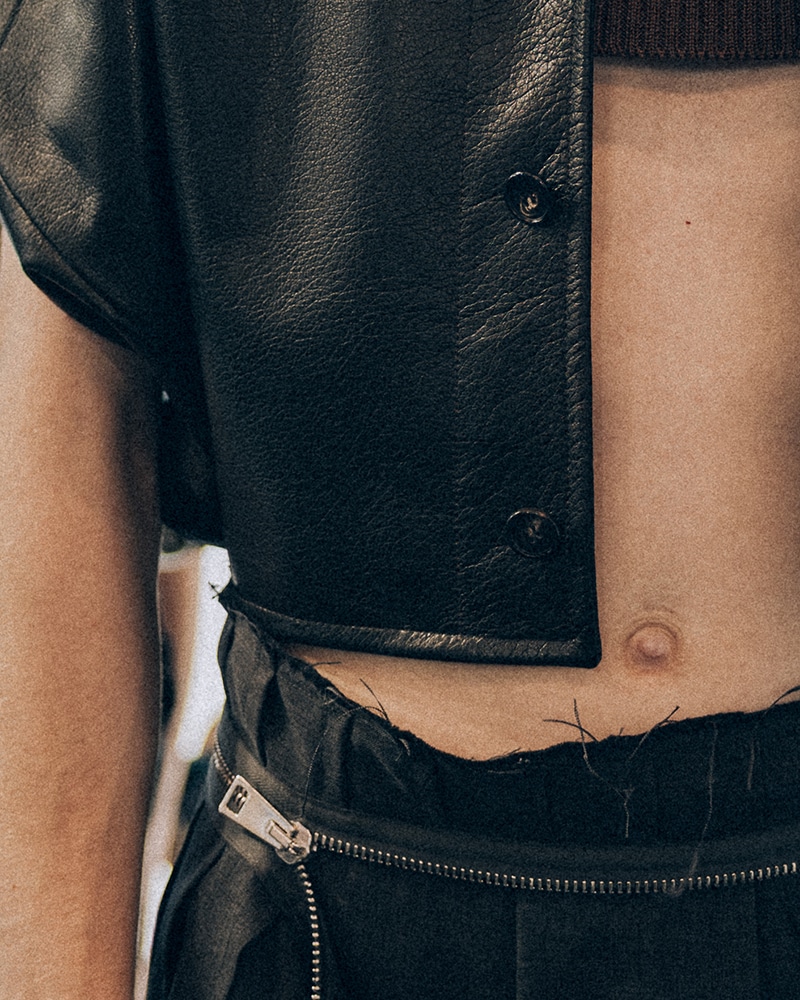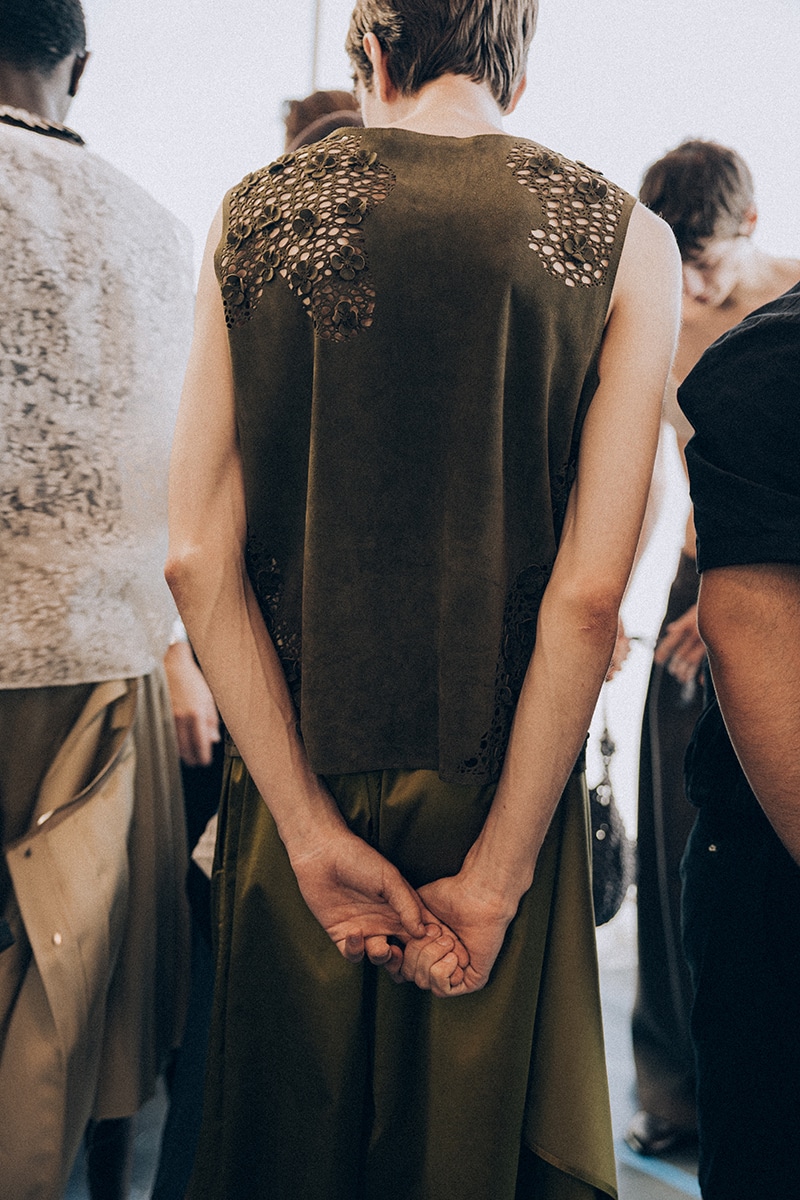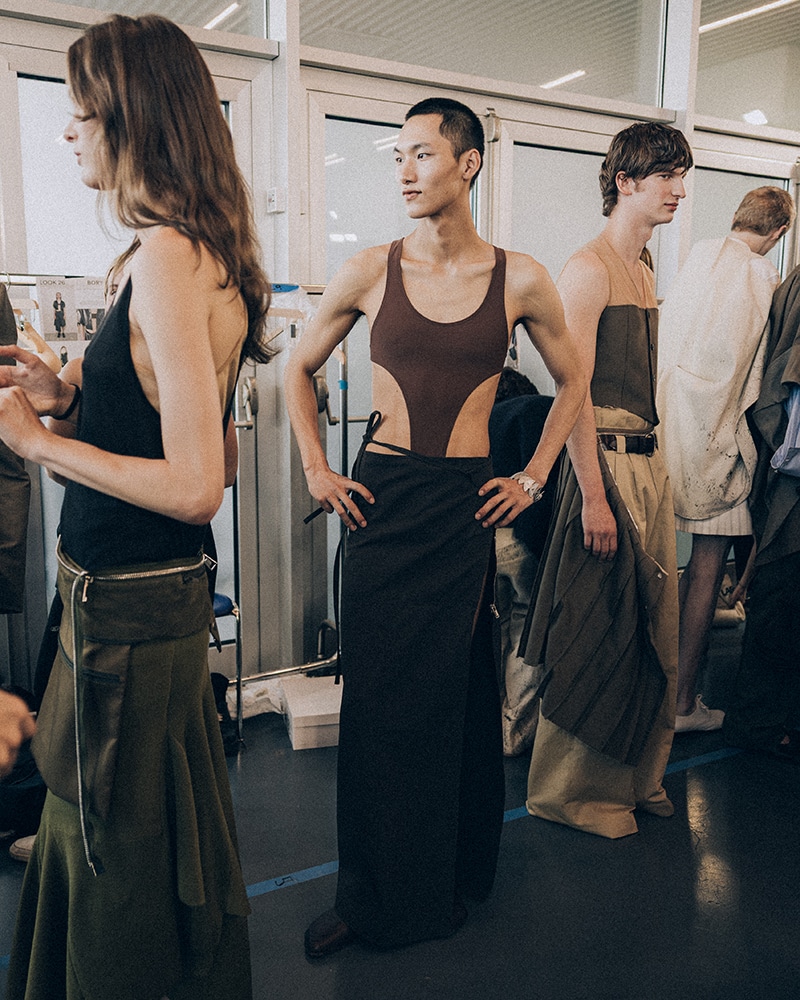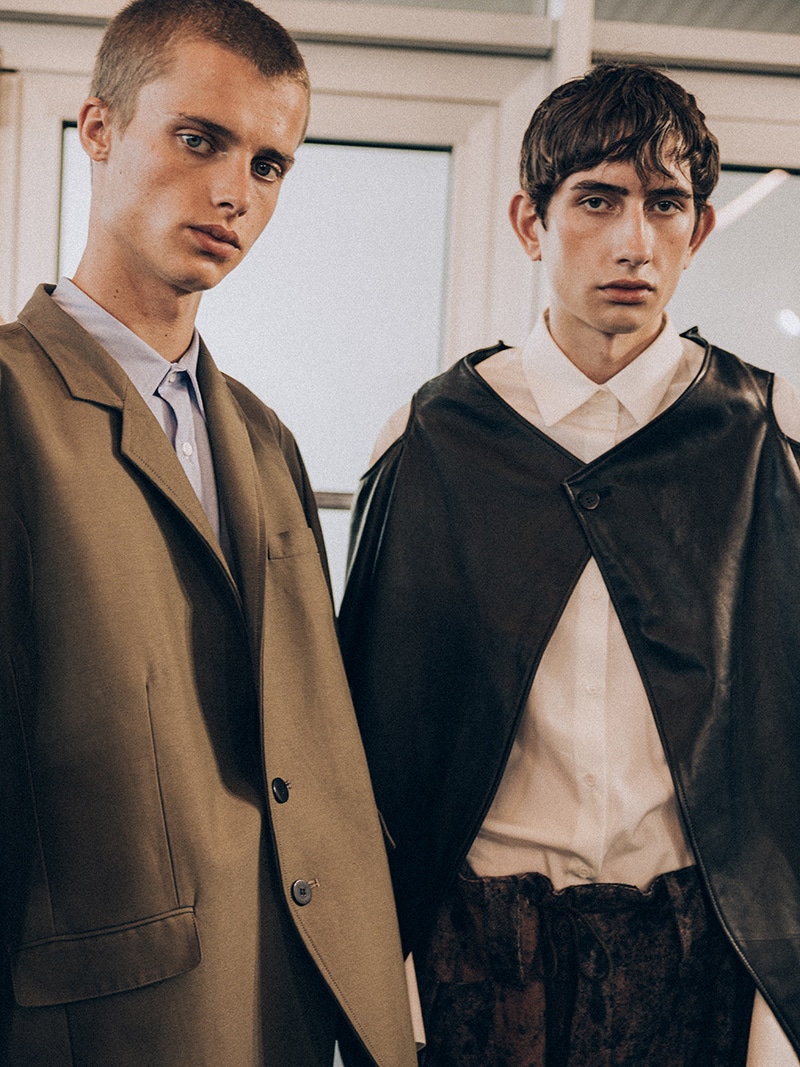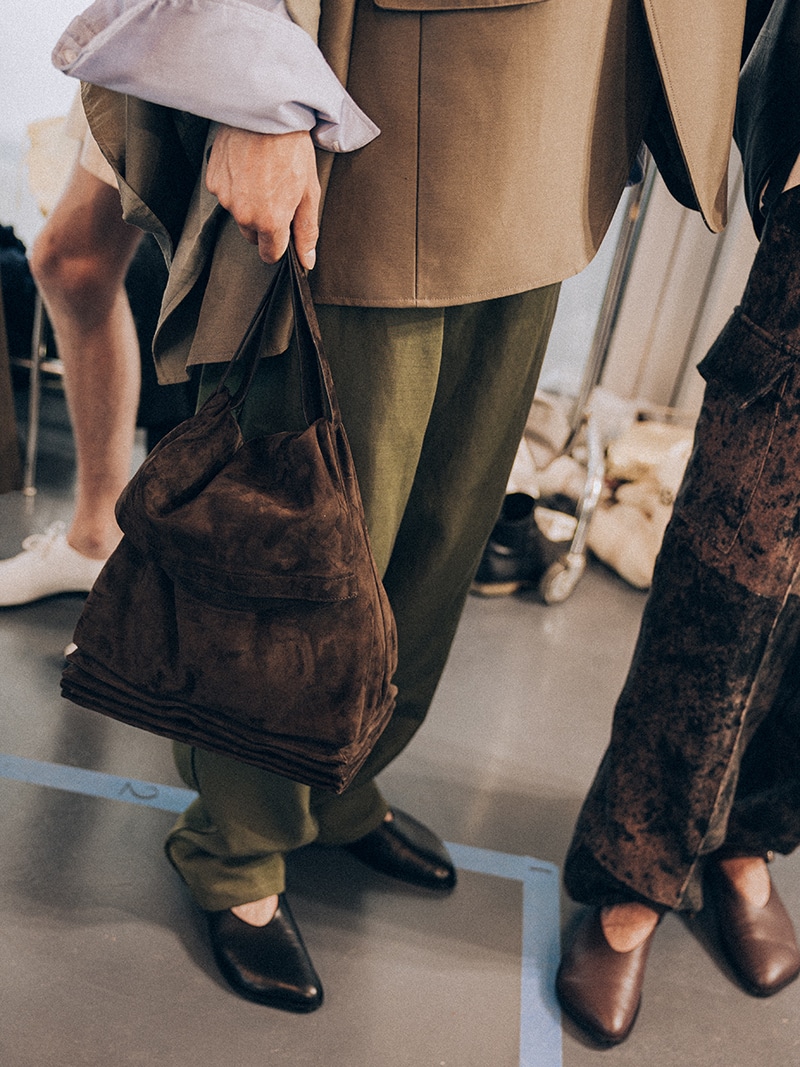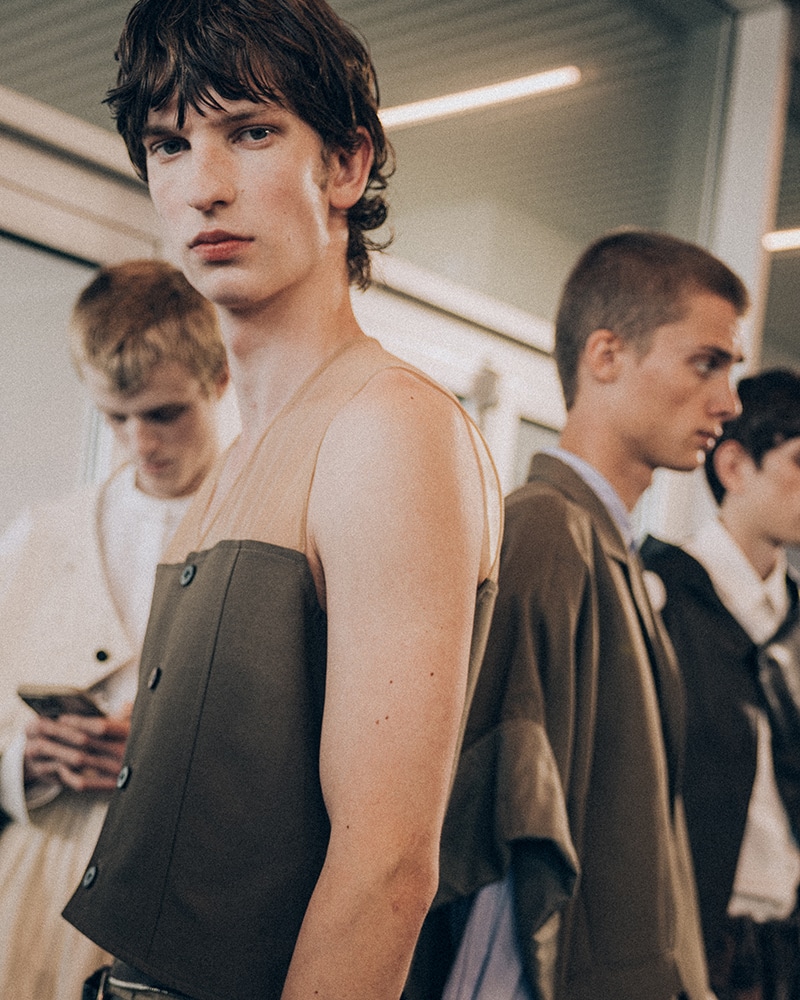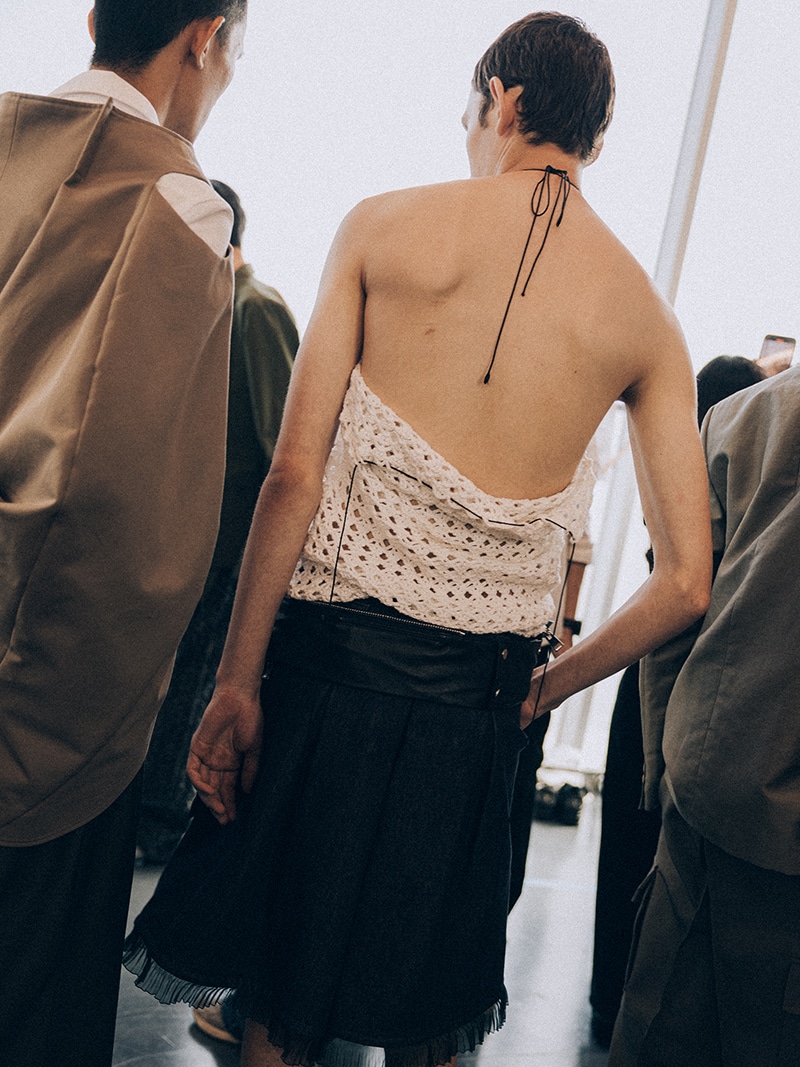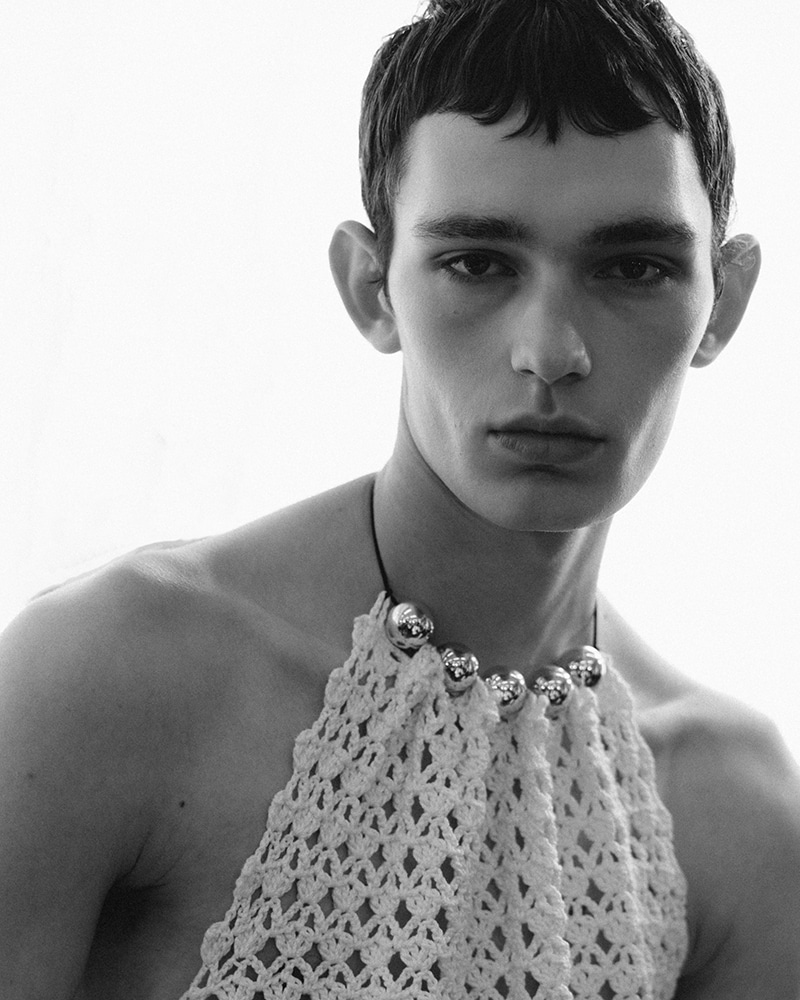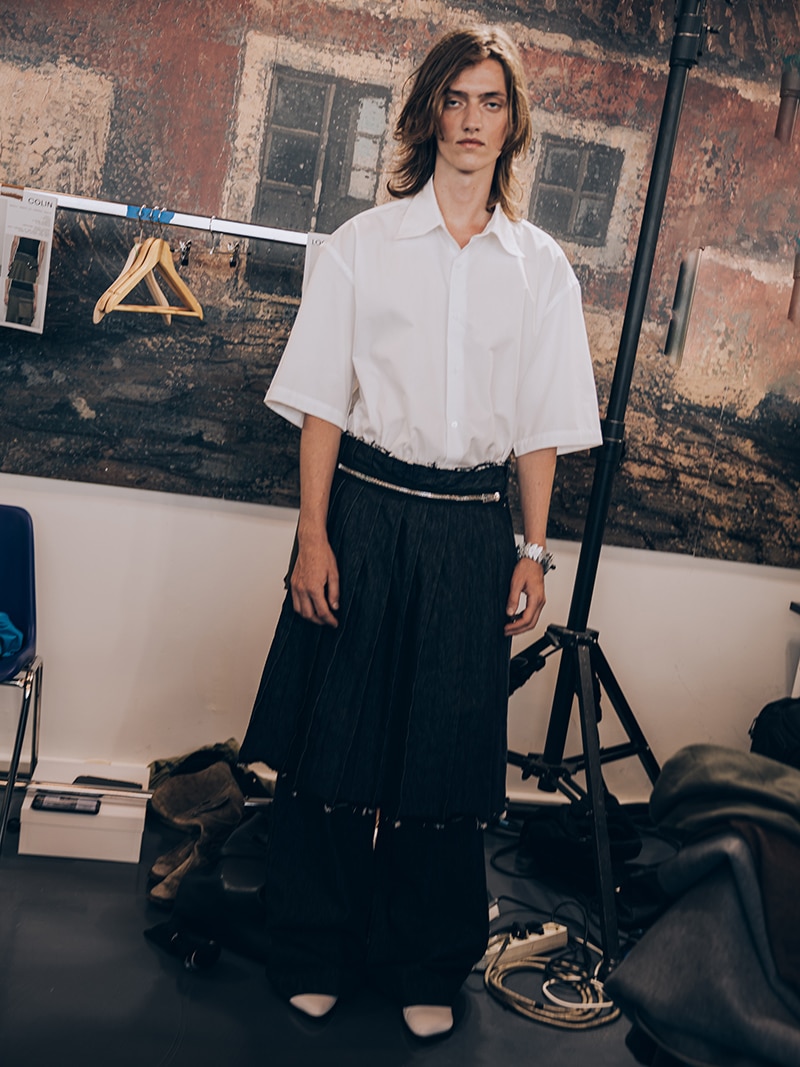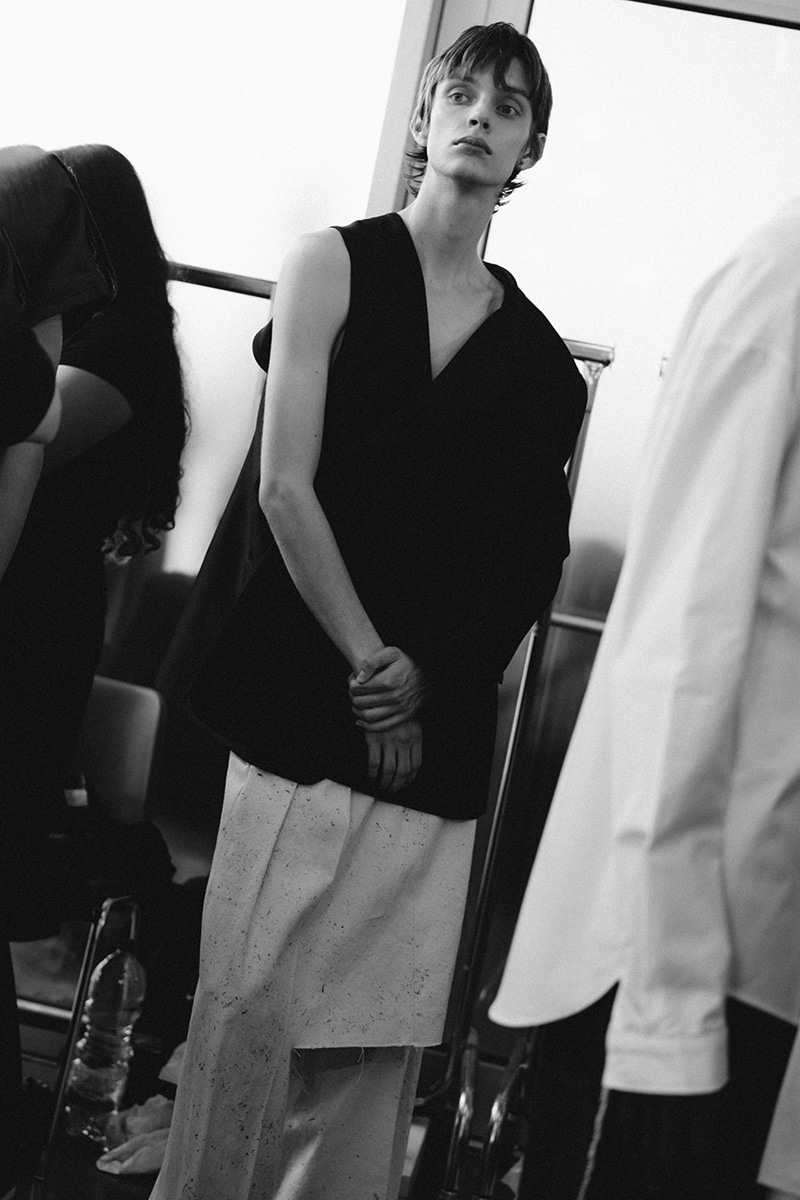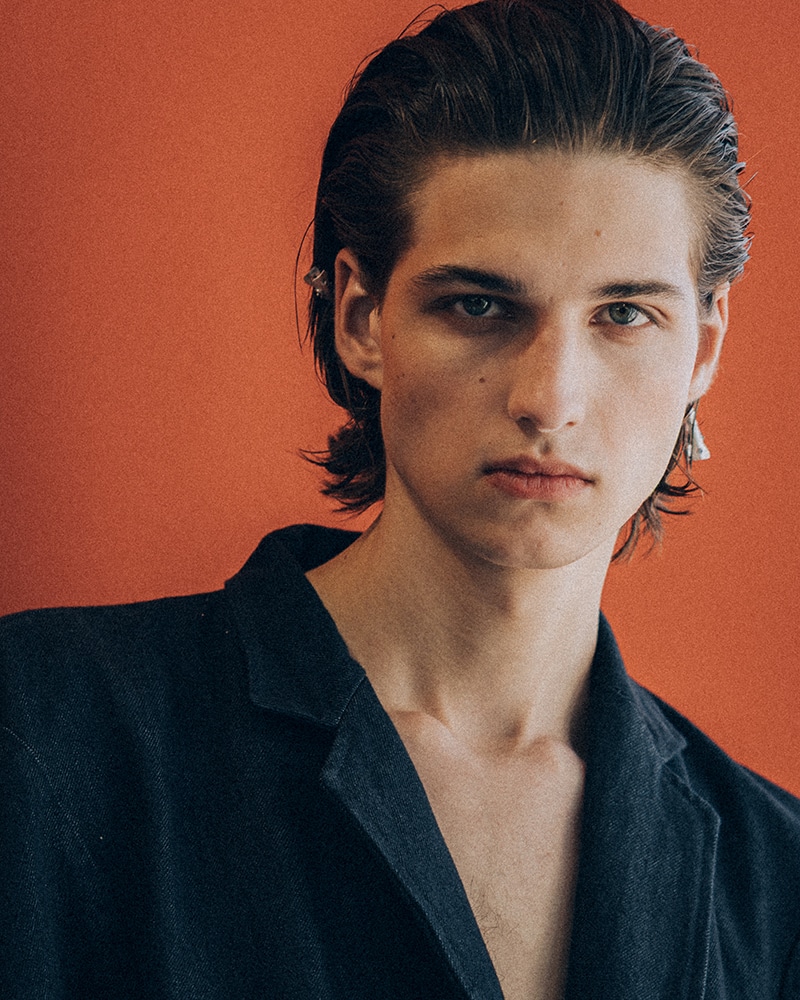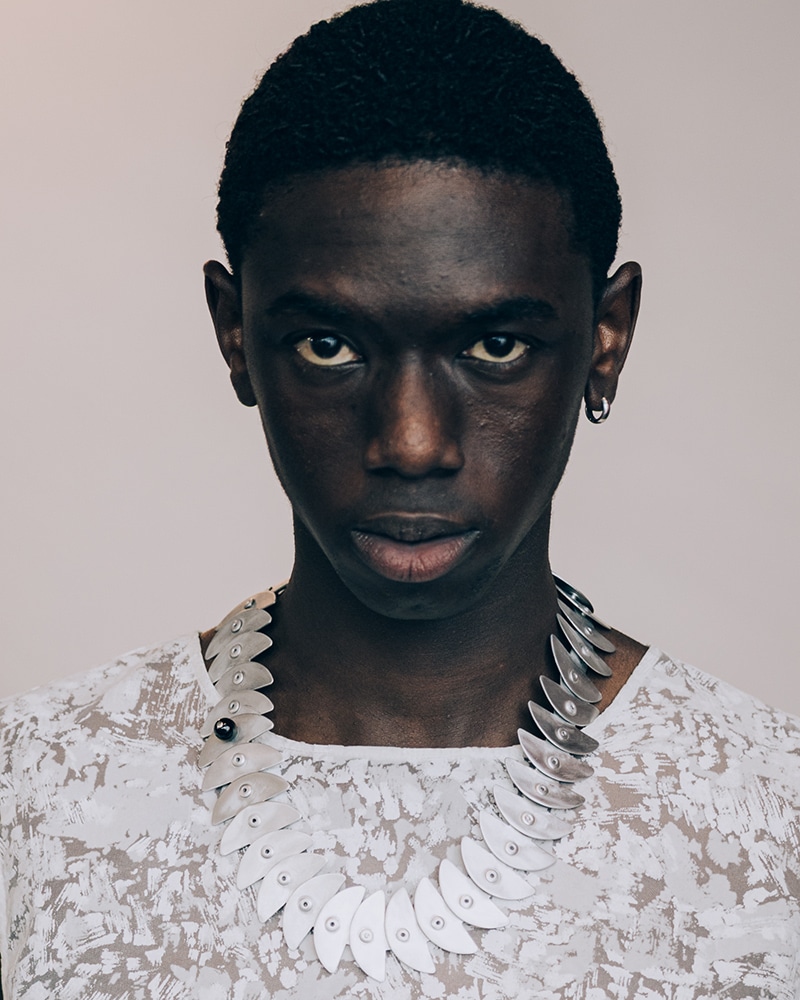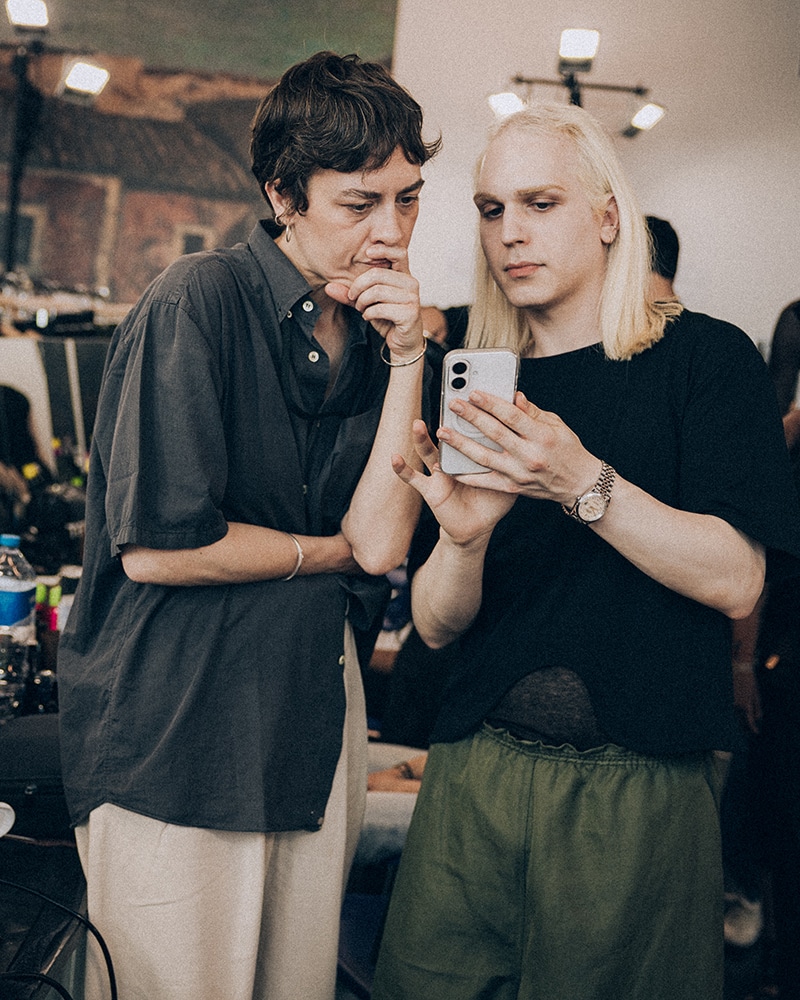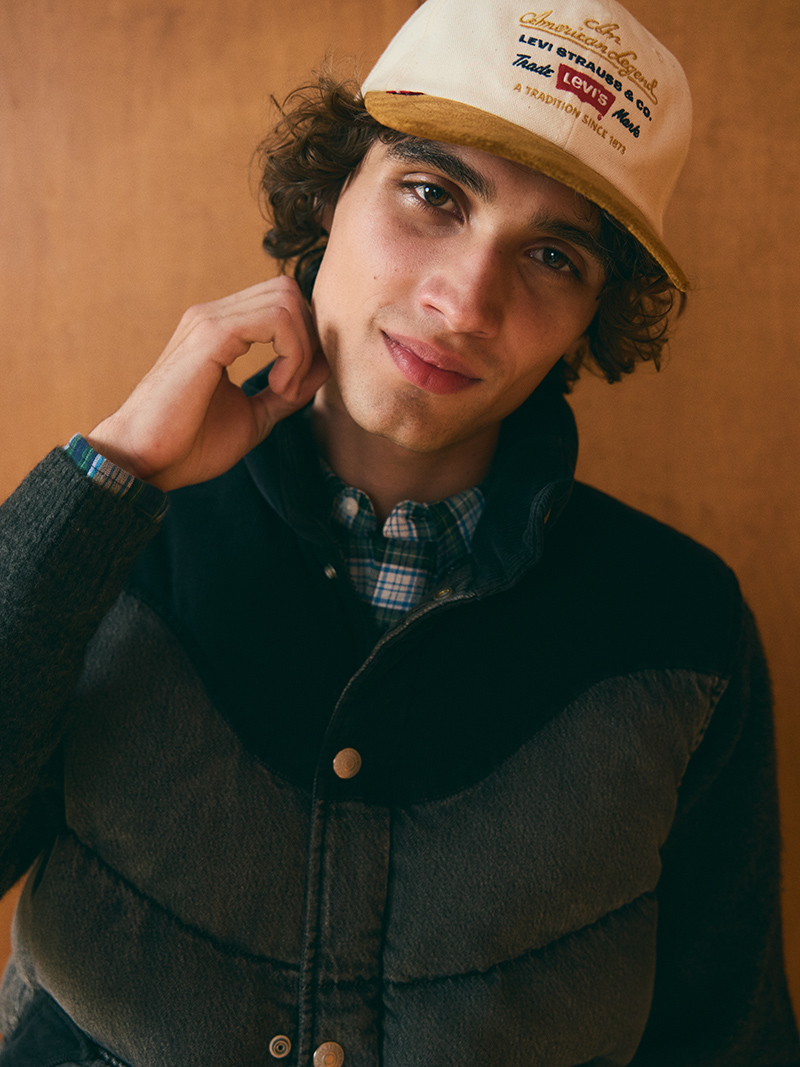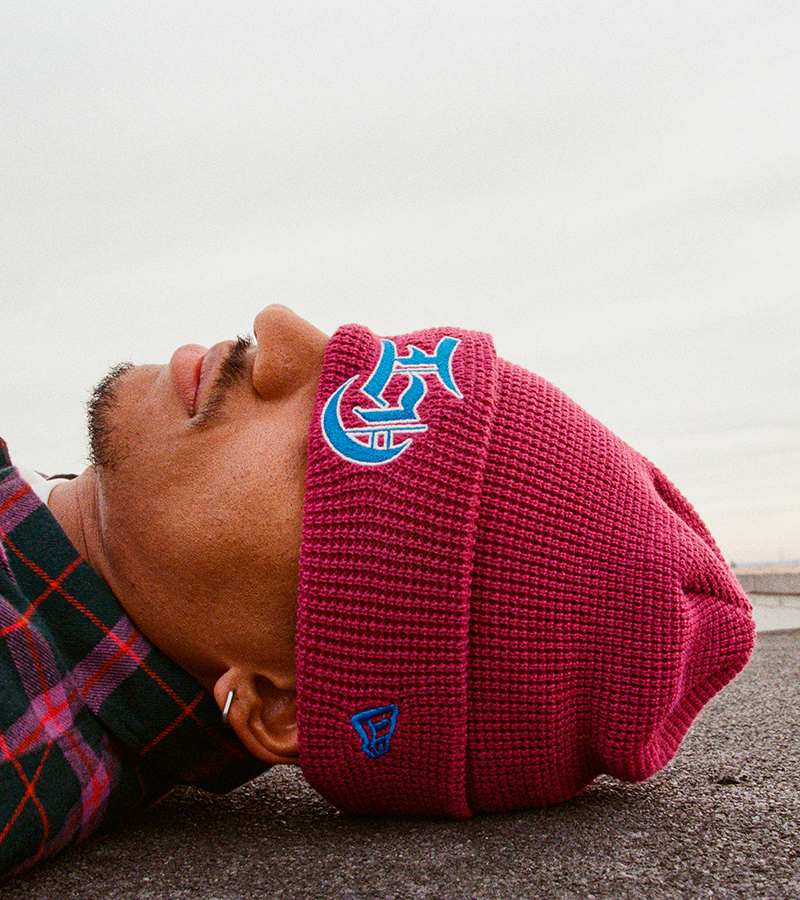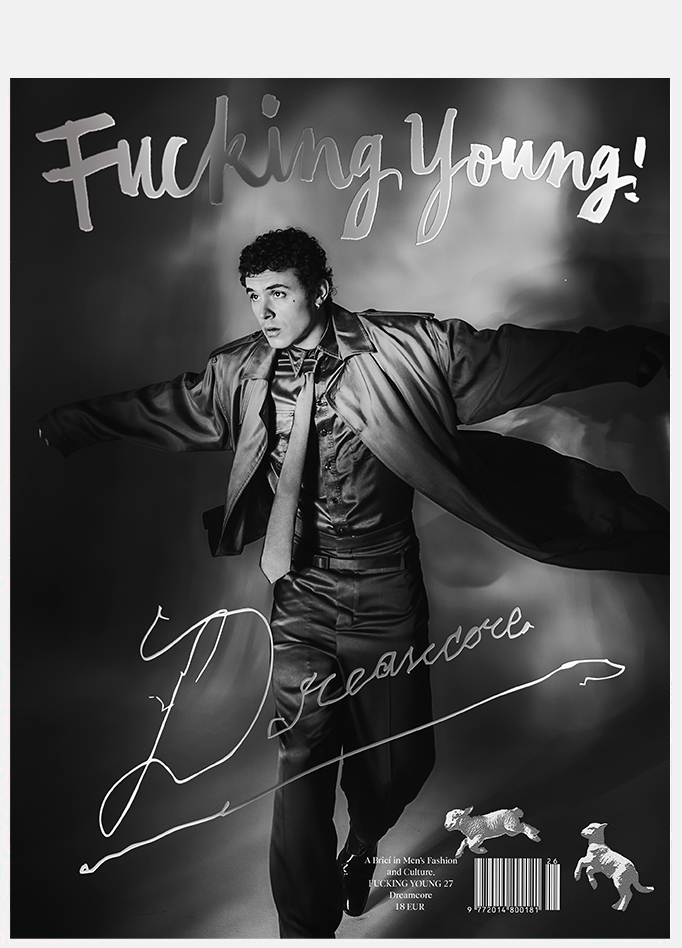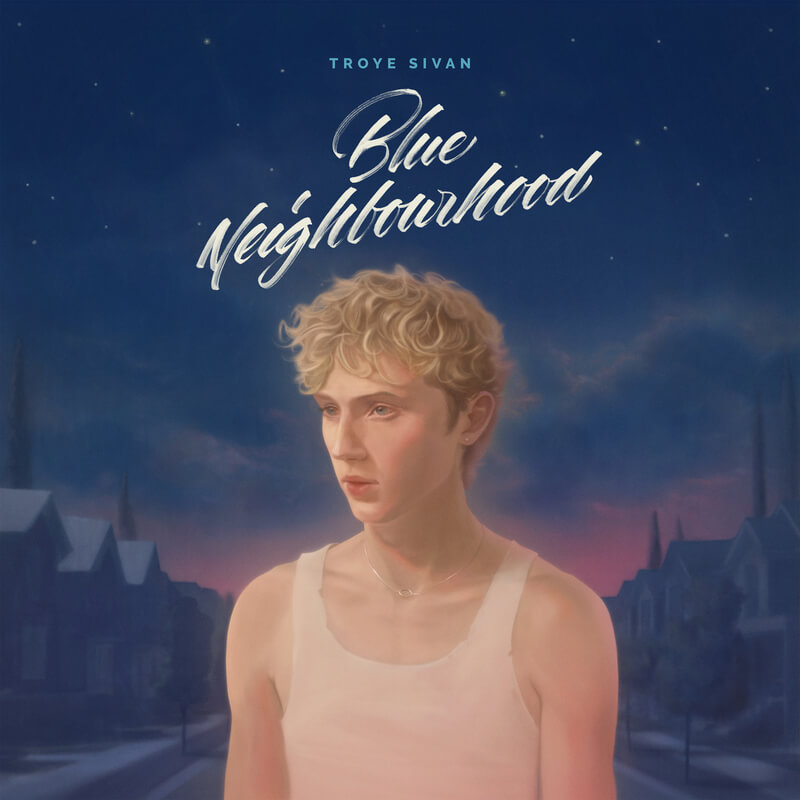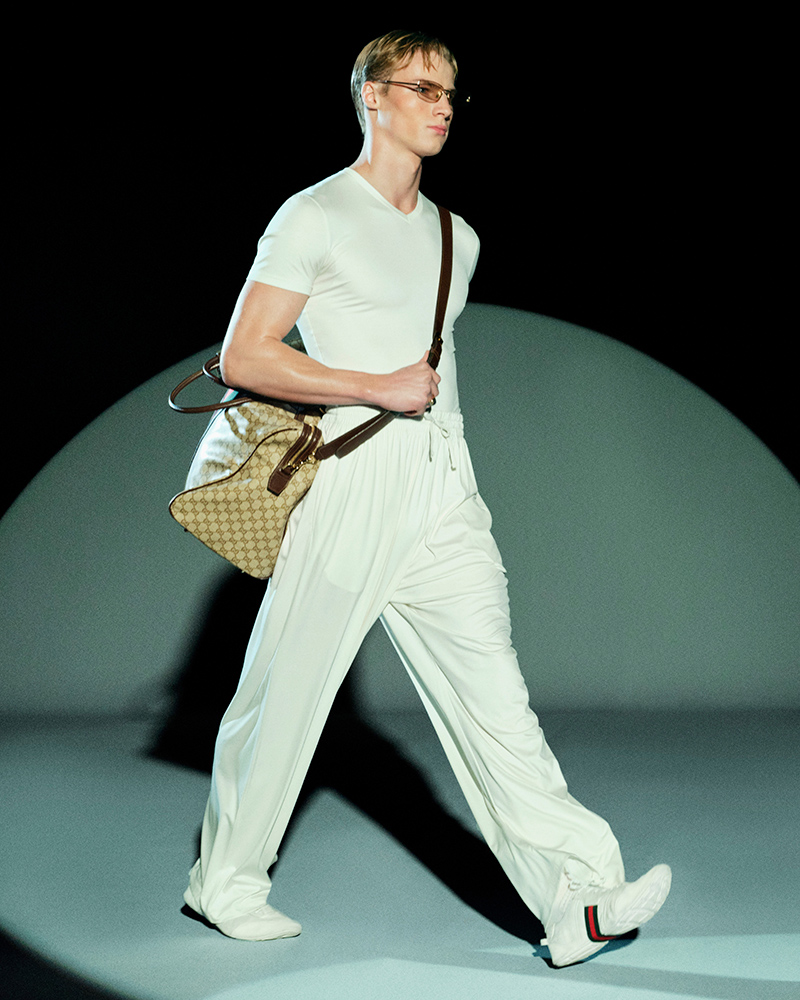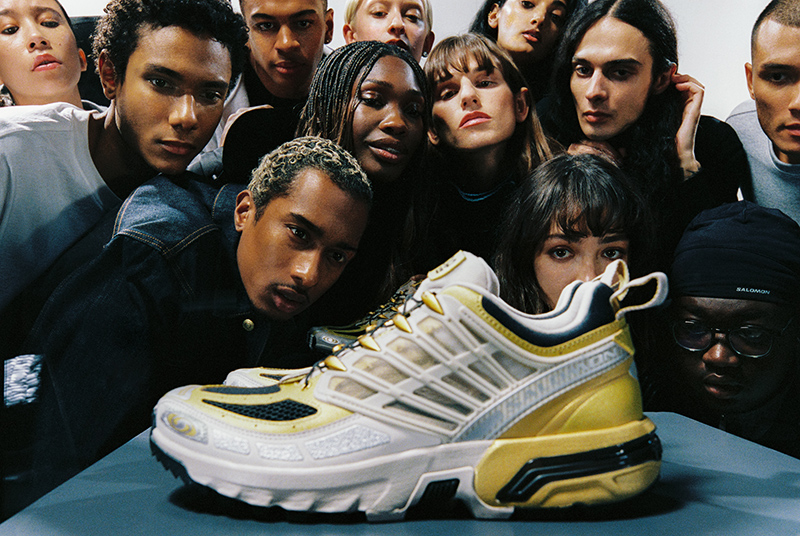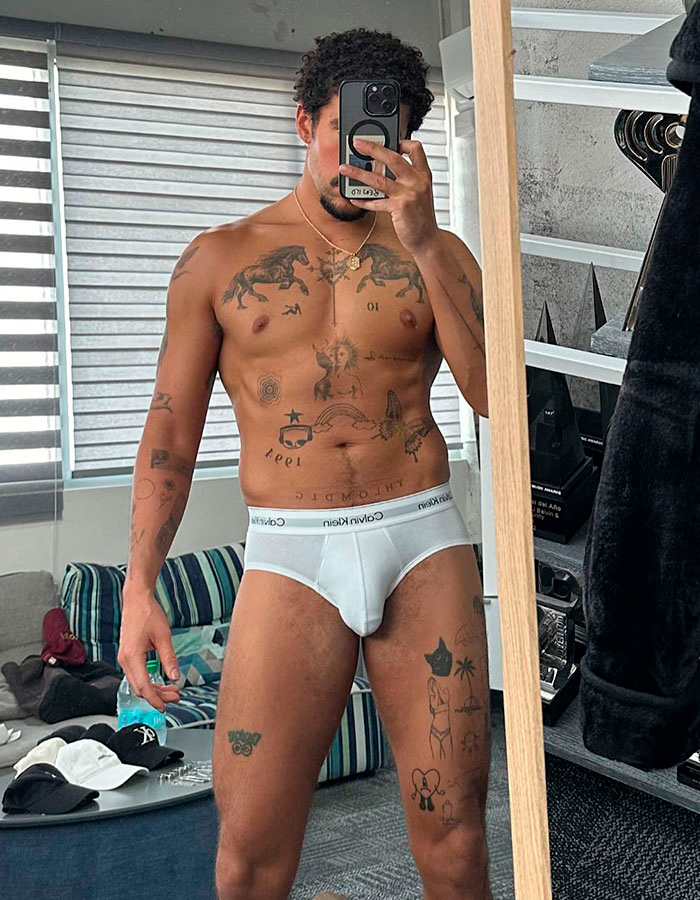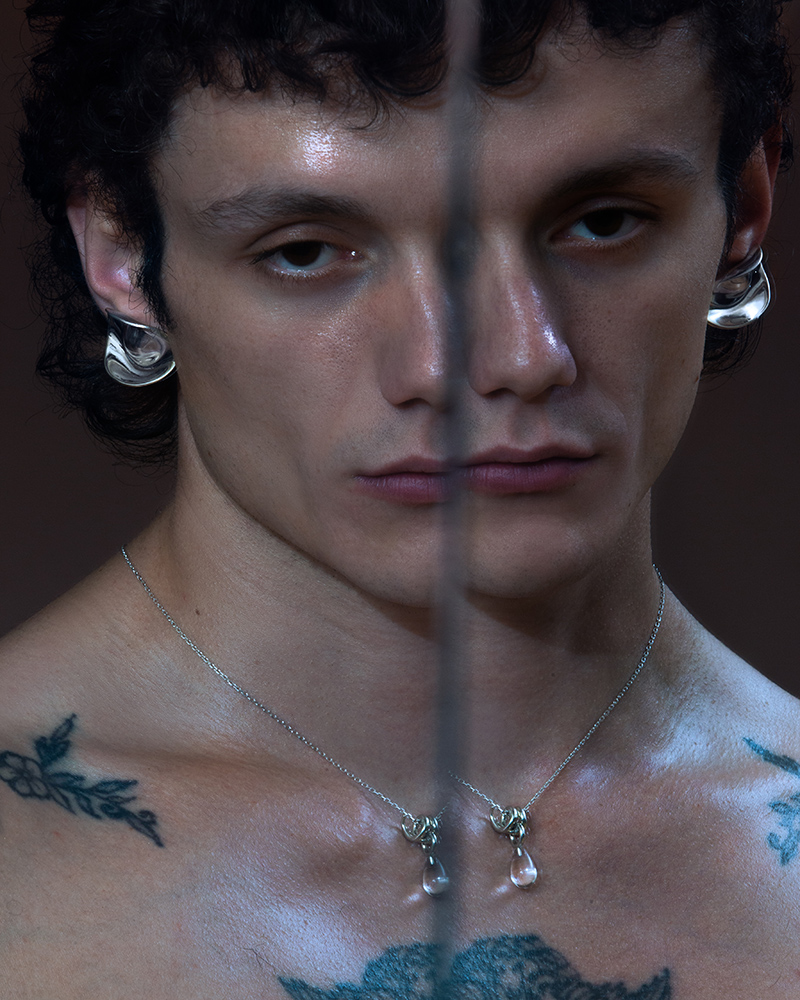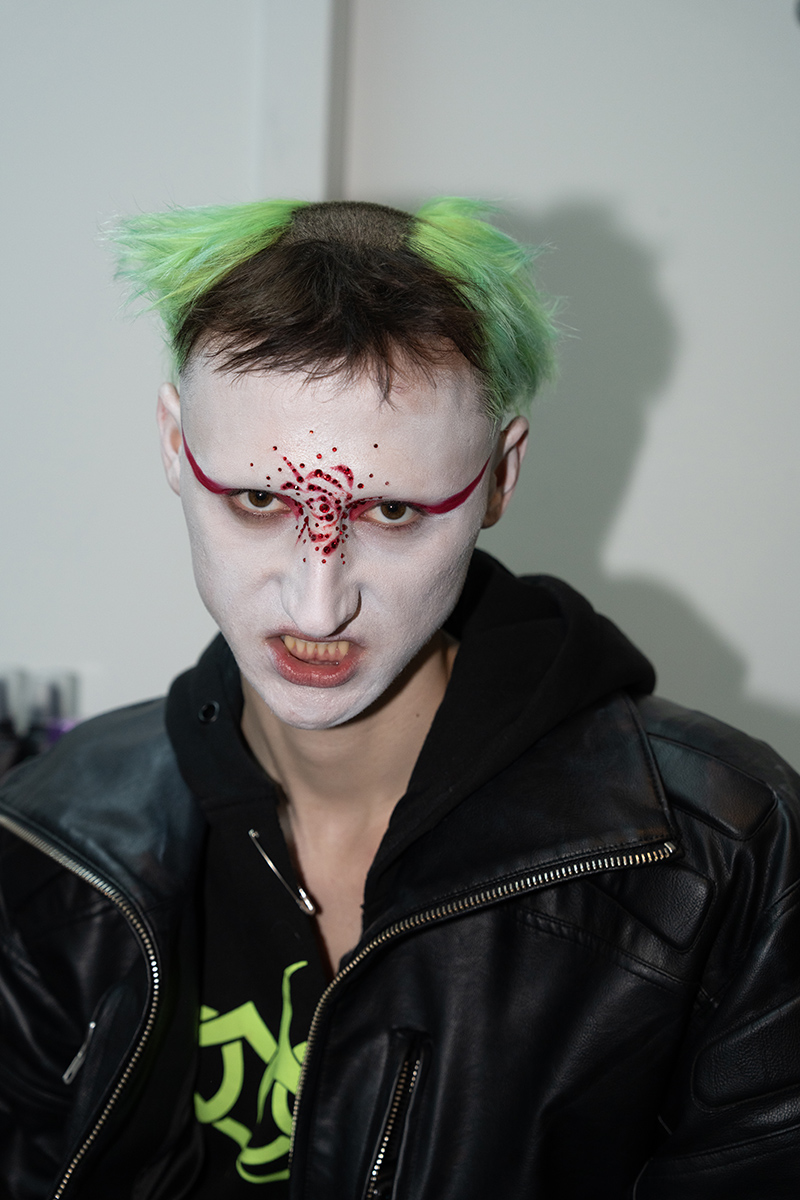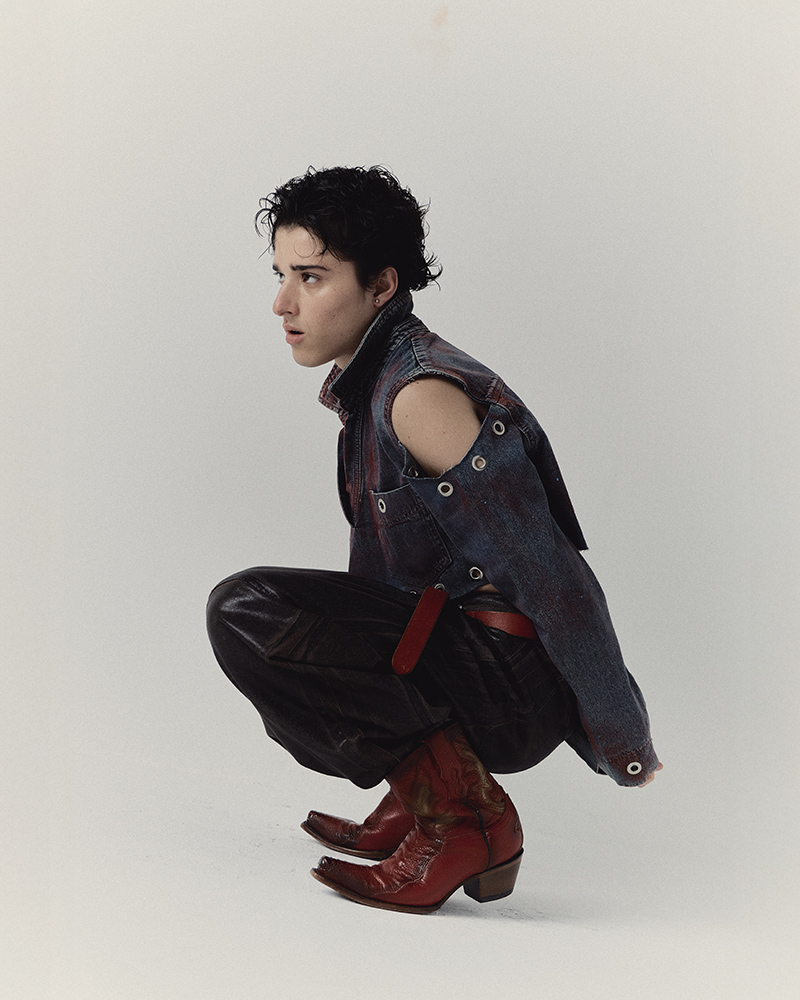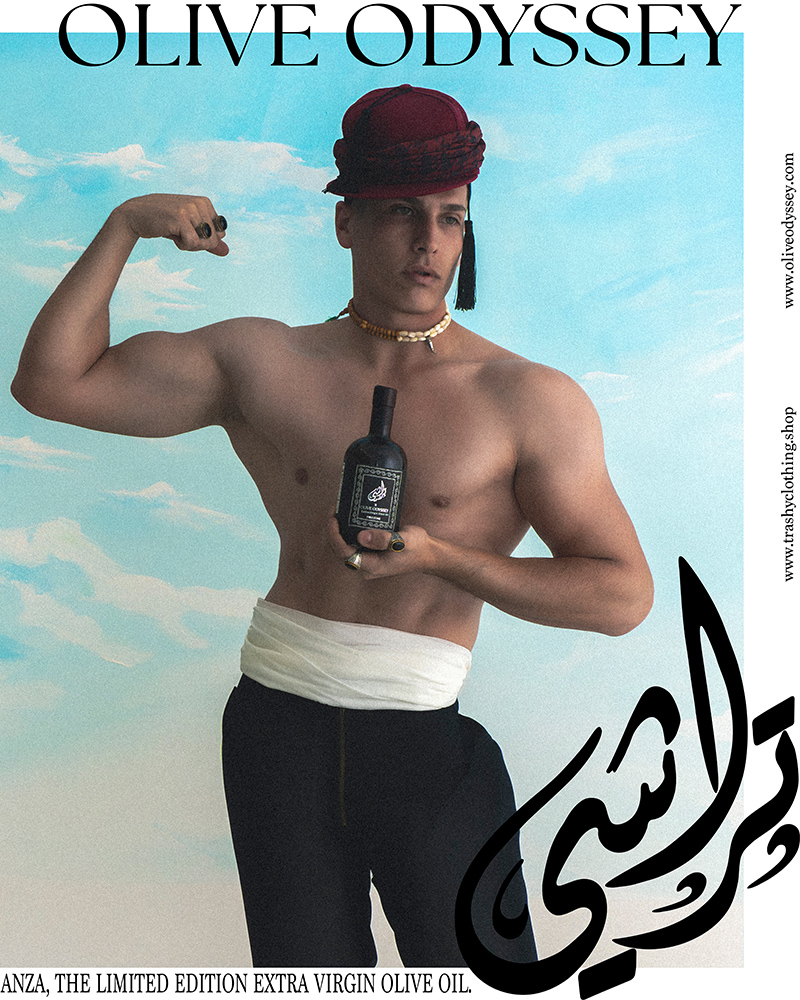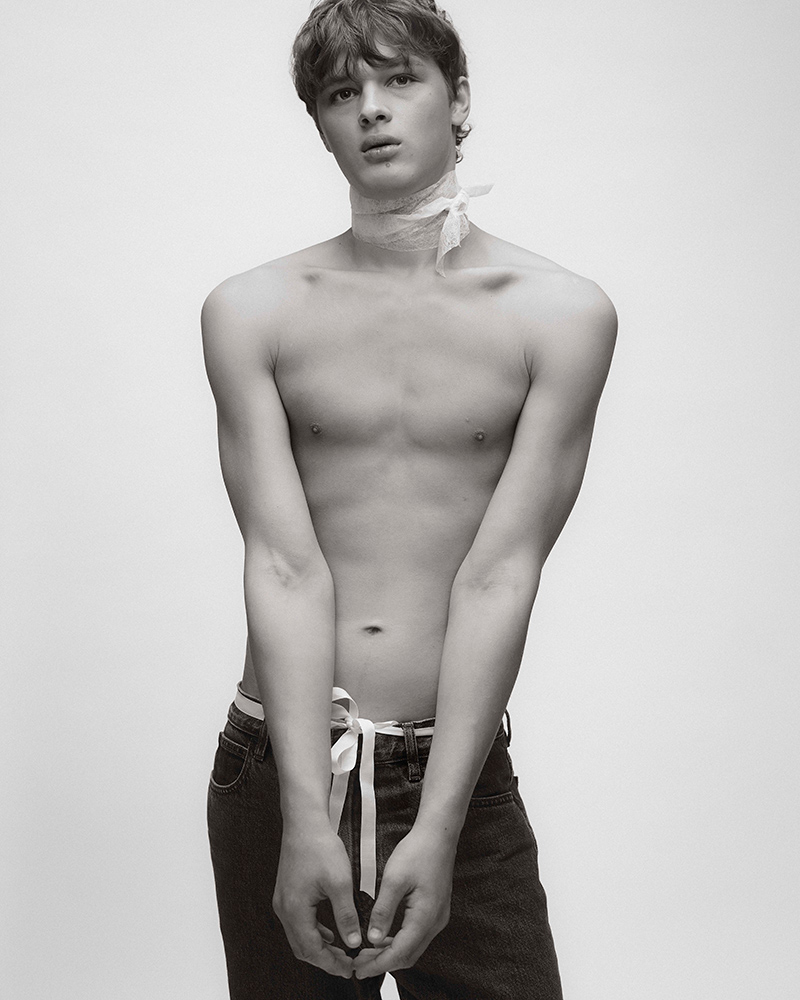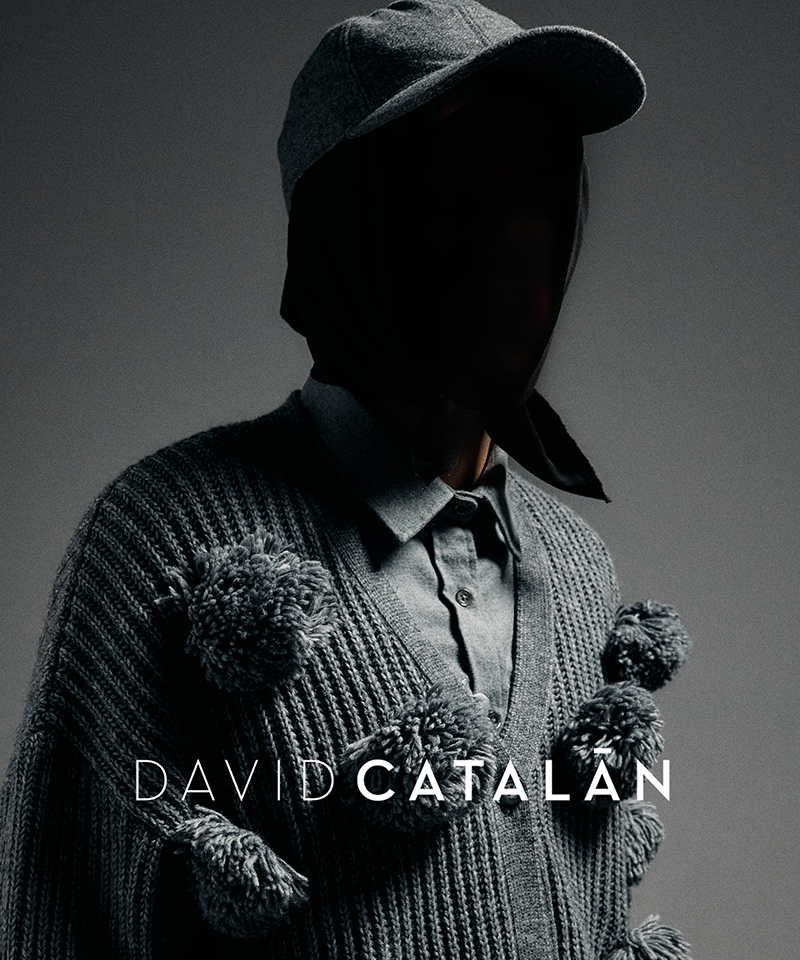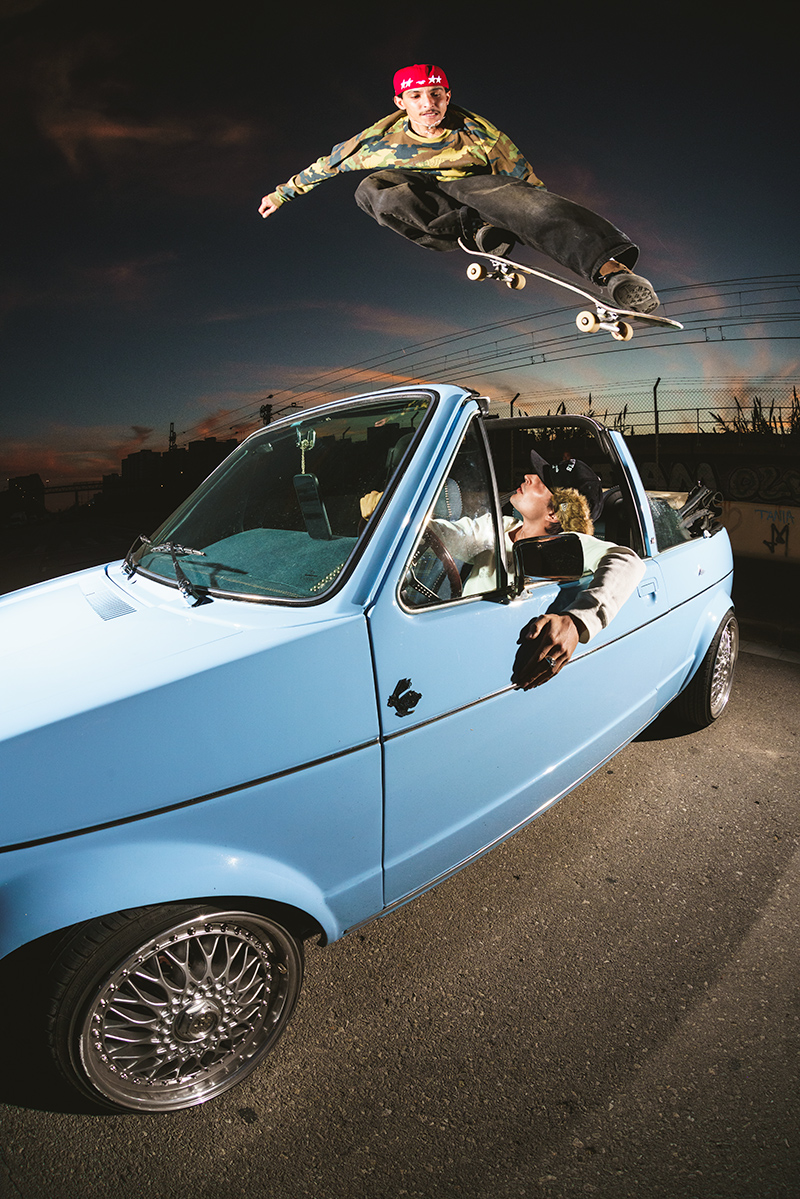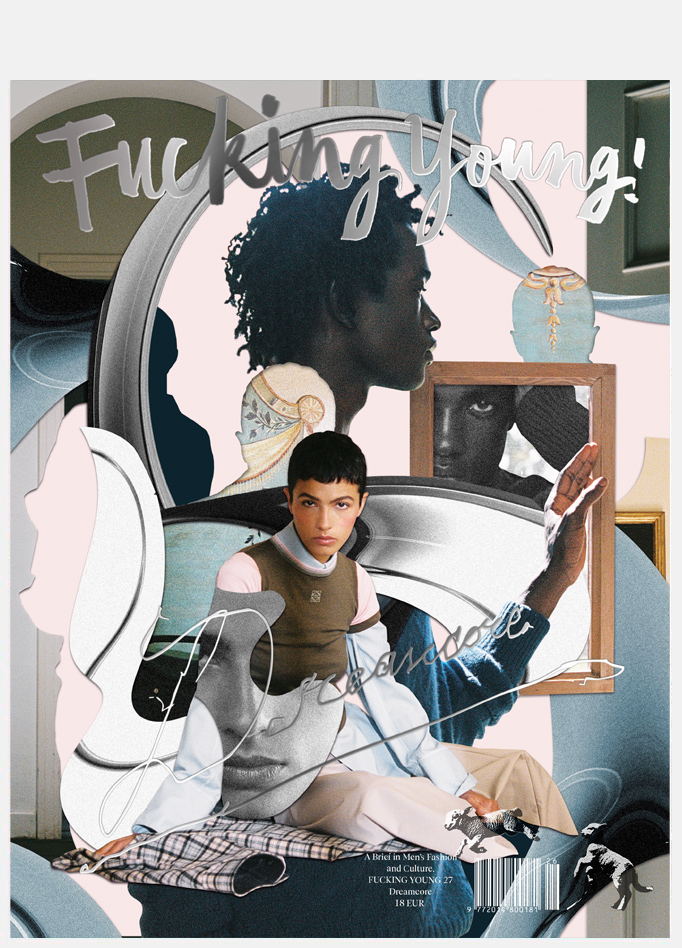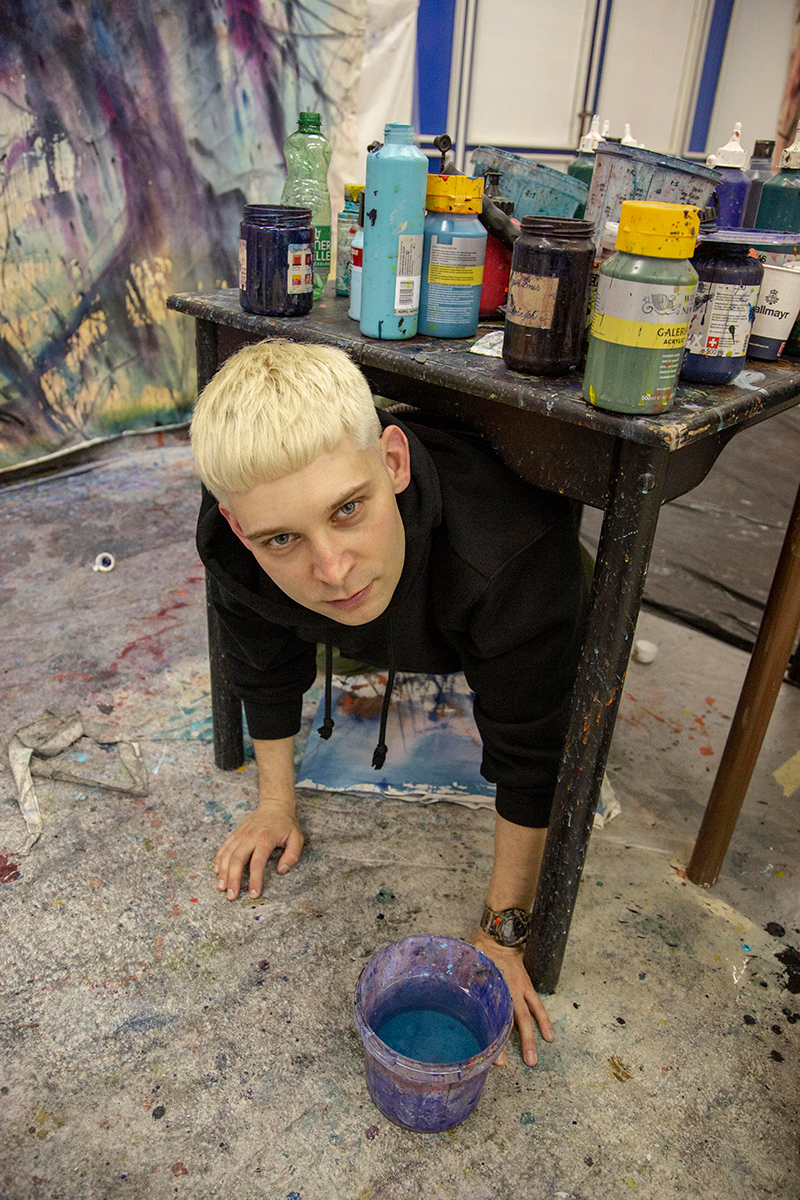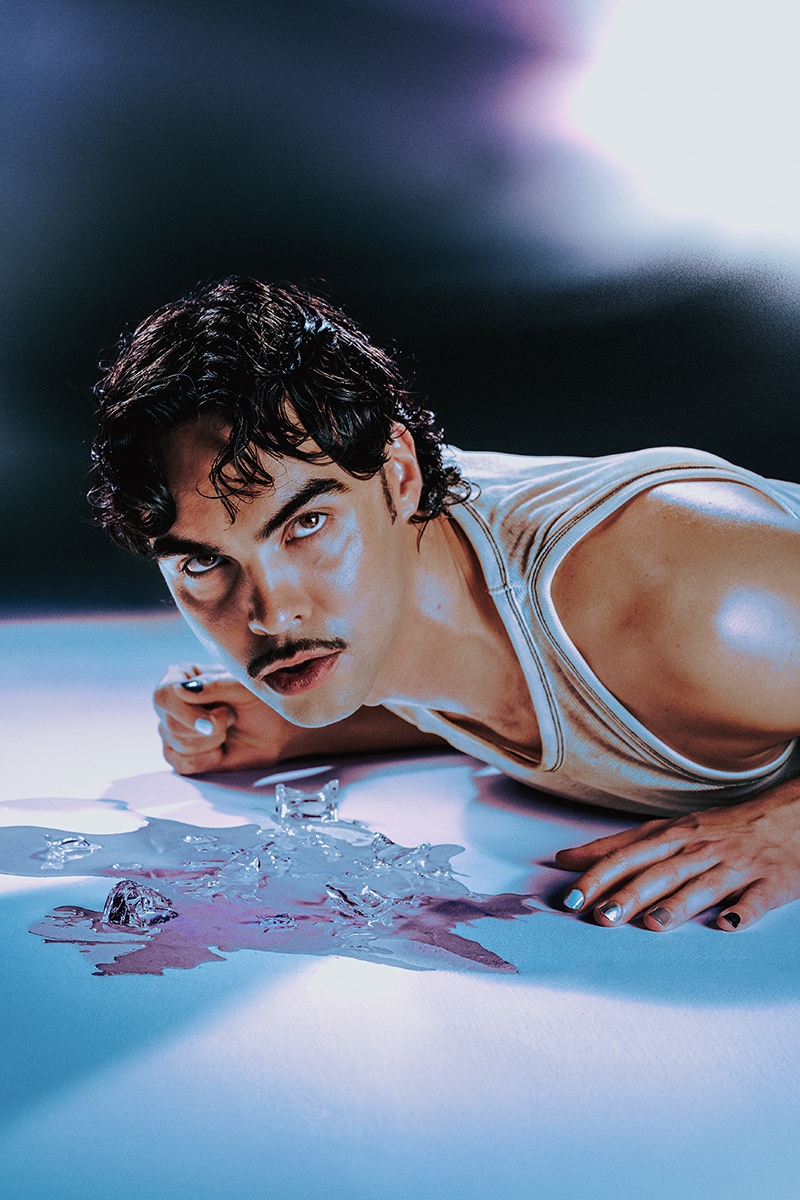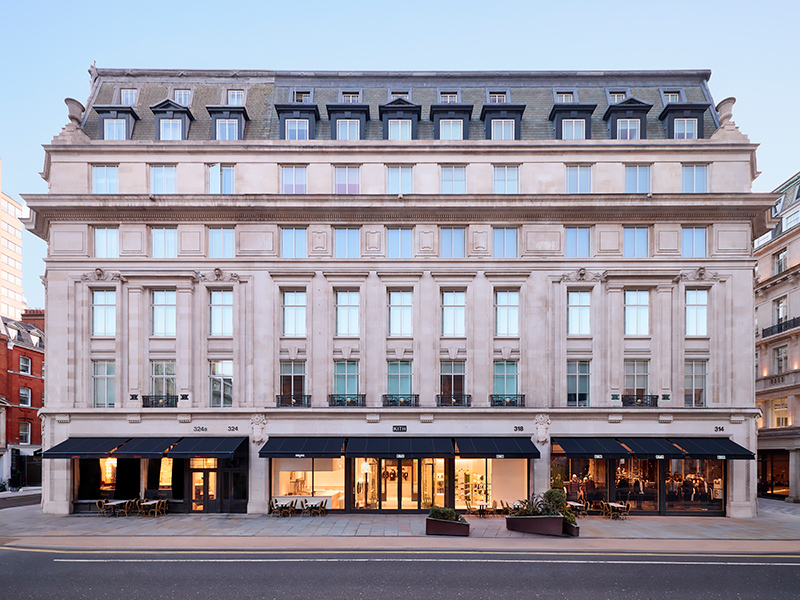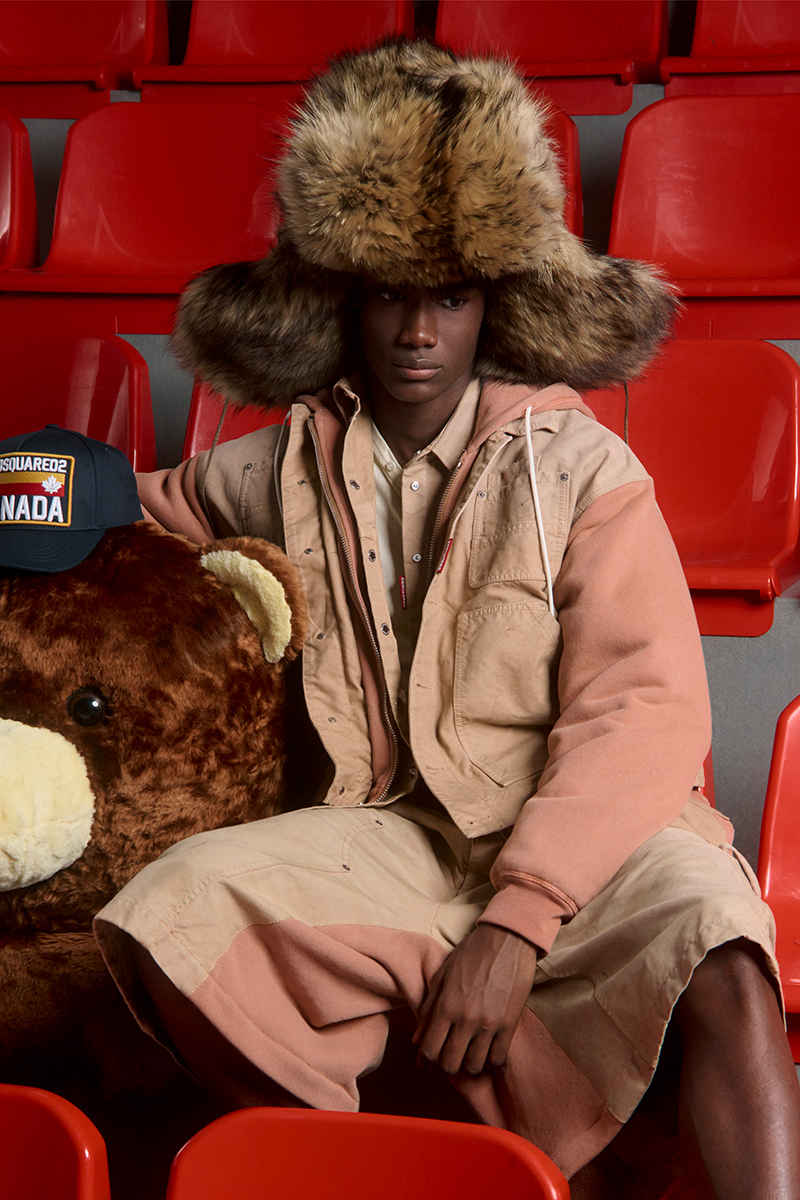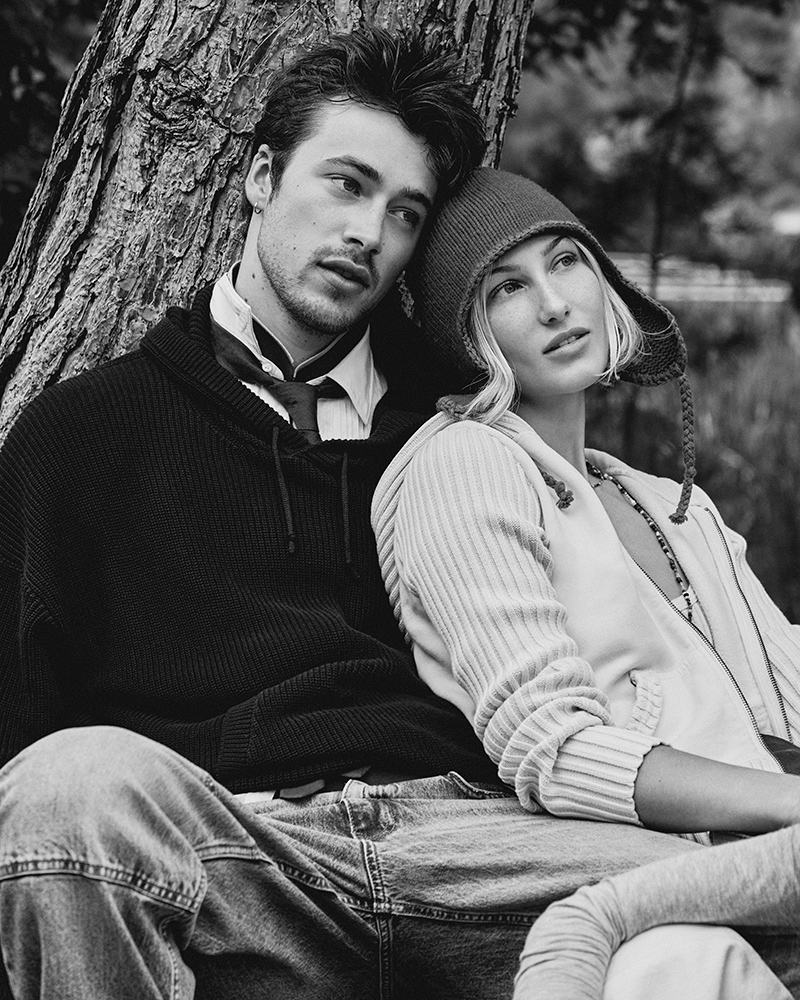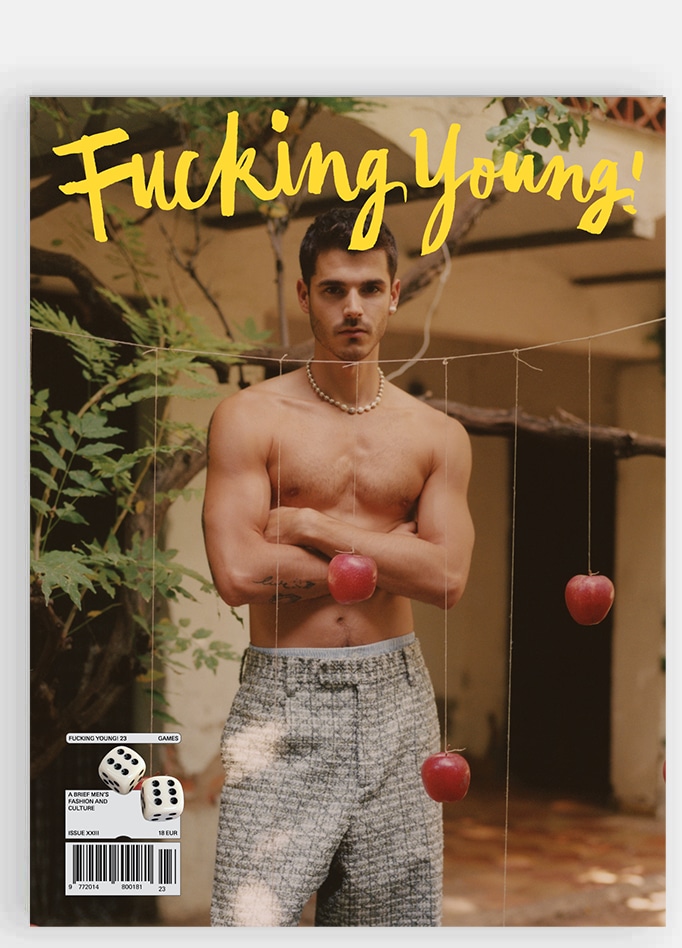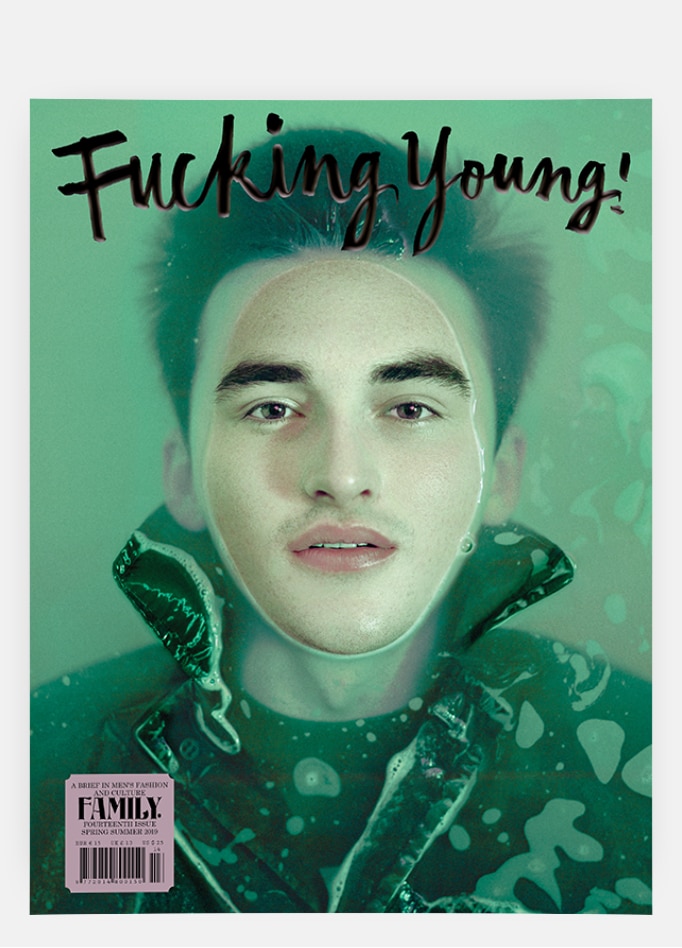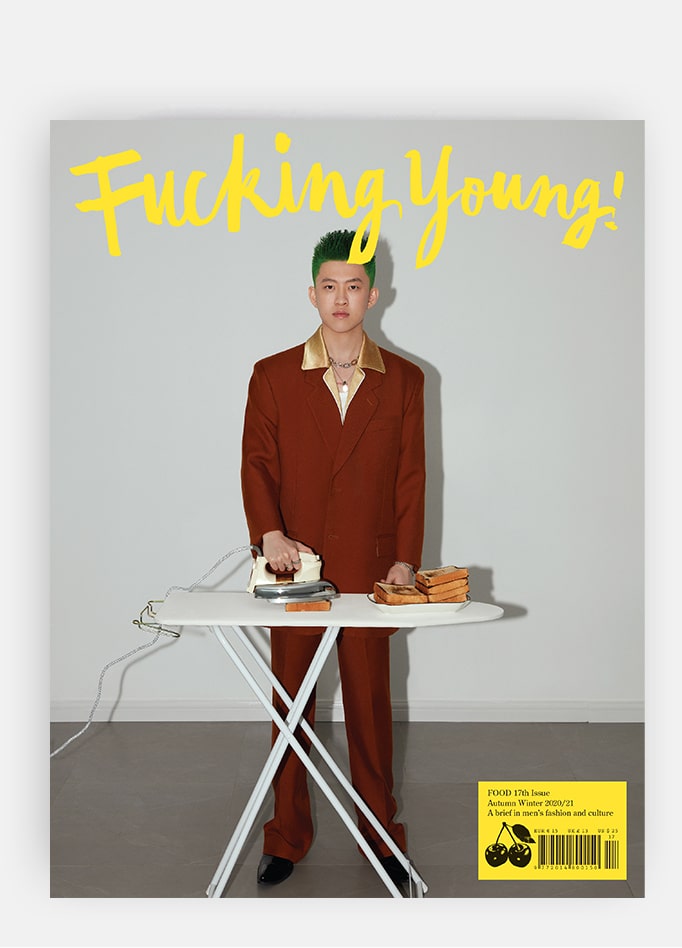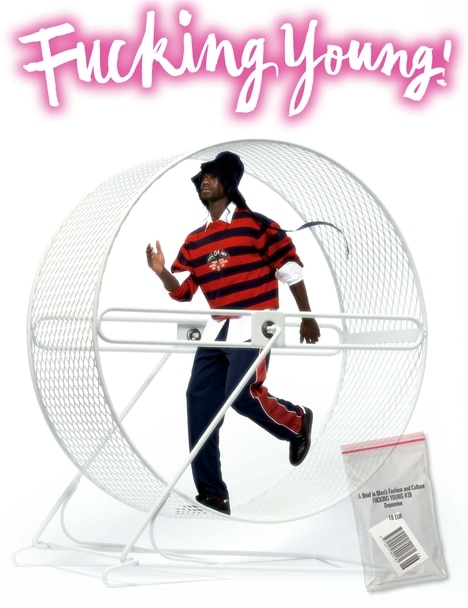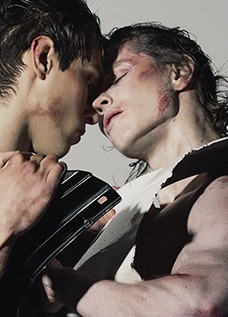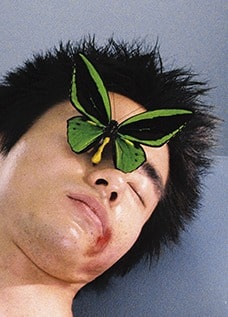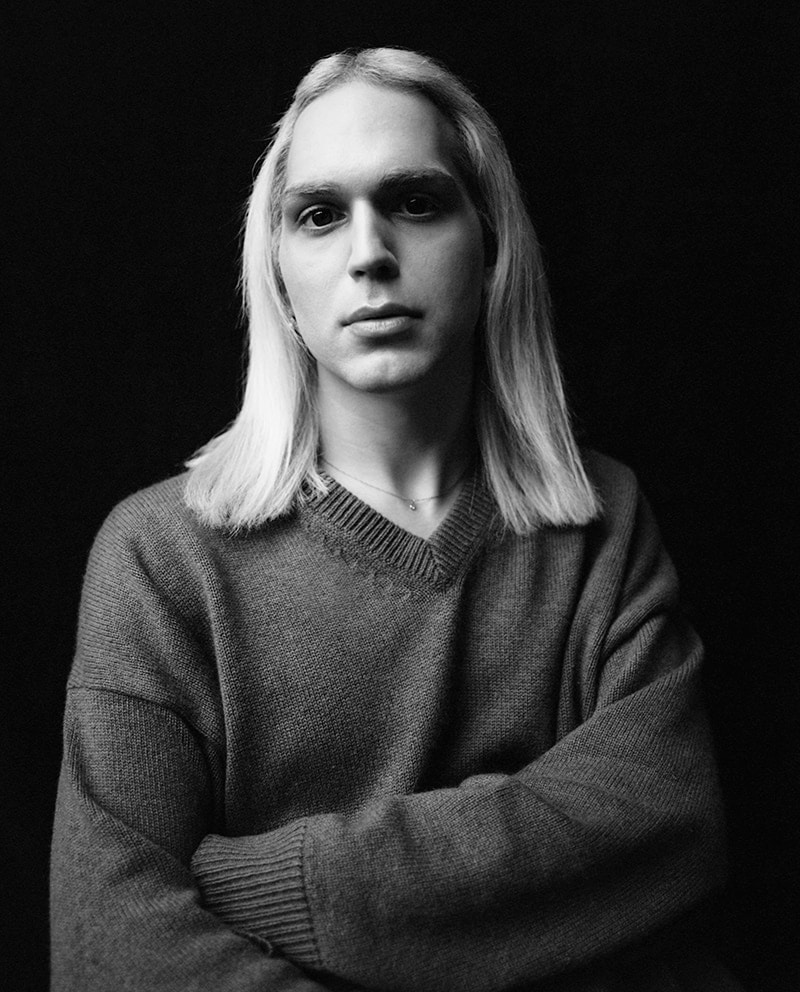
One of the highlights of Pitti Uomo, Niccolò Pasqualetti’s menswear show was striking, poetic and sensual. The Italian designer, who grew up in a small village between Pisa and Florence, knows how to do craft in a subdued and resolutely contemporary way. This season, he played with military archetypes and subverted them, adding his own gentle -and subversive- touch to pieces that are often thought of as trophies of masculinity.
In person, Pasqualetti comes across as calm and collected, but you can feel his resolve and intense determination. In fact, he is as magnetic and captivating as some of his garments, but in a low-key frequency. What the talented designer enjoys the most is exploring ambivalence and ambiguity, as well as playing with sartorial codes. We sat down with Pasqualetti the day after his show to discuss his creative process, how he approaches gender rules, and why being a young independent brand in Italy is no easy feat.
Congratulations on your show yesterday. What sort of mood did you want to convey?
I do my own styling for the shows, and that’s an important part of the process for me, because I get to see the collection in a different way and understand it anew. This time, I was keen on exploring contrasts between shapes and materials. I also wanted to cover certain body parts, while revealing others. I’m interested in ambiguity and sensuality, but not in an obvious way. It’s the suggestion of it, which I find seductive. So I took some military-inspired pieces and added sheerness to them. In general, nude and khaki are tones I really like to use.
Several pieces are hybrids, such as the skirt trouser you showed or the cape that featured the full outline and seams of a tailored blazer. I do like the idea of merging sartorial codes, as well as pieces that can be transformed. The pleated skirt trouser is a statement in itself, but you can remove the skirt part if you don’t feel like wearing it all the time.
Why were you inspired by the military?
I wanted to explore traditional concepts -and codes- of masculinity while pushing them further.
It is military, but without the aggression.
Exactly.
Your clothes have a strong identity and character. Have people responded to your work in a positive way?
They have. Some retailers, such as The Broken Arm, have supported us from the very beginning, and I think people are looking for clothes that have personality and a story to tell. Authenticity is also something I find important in fashion today.
What place does craft play in your approach?
It is important that the clothes are intricate and have exciting textures or detailing, but I don’t like garments that scream ‘crafty’, if you know what I mean. Craft is essential, but it should always be done in a contemporary way.
How challenging is it to launch an independent brand in Italy?
I launched my brand in 2021 and convincing manufacturers at the time was not easy, but I think that after the pandemic many attitudes changed. People were used to producing large volumes for bigger brands and suddenly their quantities dropped. In a way, it made them more open to support upcoming brands. Our fabrics are dead stock, too, which we get from the best houses. In general, I feel there should be more support for younger talent in Italy, even though winning the ‘Who Is On Next’ prize 4 years ago really helped us as a brand.
Were you approached by Pitti Uomo a long time ago to do a show here?
Actually, they approached me 3 months ago, which was rather late. I work a lot on instinct and do no overthink things, so I decided to go for it. I’m amazed we could pull it off together in such a short amount of time and am really happy with the way everything went, as well as collaborating with the Pitti team obviously.
Can you tell us about your location choice for the show?
I chose Teatro del Maggio Musicale Fiorentino, because the building is a work of art with incredible architecture designed by Paolo Desideri.
Is this a one shot type of thing or will you do another separate menswear show next January?
Let’s see. We will be back in Paris for womens, but I did find it interesting to separate the two.
You are a womenswear graduate from Central Saint Martins in London. What is your take on gender?
In my world, gender is irrelevant. The reality of the industry is something else, as fashion creates separations and has distinctions when it comes to budgets for instance.
Was fashion a calling for you, and which designer inspired you the most?
I used to love drawing and collage as a child. I grew up in San Miniato within the Tuscan countryside, so there are not a lot of distractions when you live fully immersed in nature. I think this solitude shaped my creativity in a unique way, because I spent a lot of time imagining things by myself. When I discovered the work of Rei Kawakubo, it was a complete shock for me as I had never seen clothes like this before.
Which part of the creative process do you enjoy the most?
I love the research that comes with every new collection, as well as sketching. What I do not enjoy is the logistics, bureaucracy and financial complications.
How old are you?
I’m 30.
We see a lot of brands being hyped-up and suddenly disappear, without anyone wondering where they went. Does that worry you?
I definitely do not want the collection to be everywhere. Overexposure is scary, and sometimes you just have to say no.
There was something spiritual about your show. Is this dimension important for you?
It is. I’m not an intellectual designer, but I like clothes that have presence and an aura of their own.
Check out below NICCOLÒ PASQUALETTI’s backstage at Pitti Uomo photographed by Su Shan Leong in exclusive for Fucking Young!:
